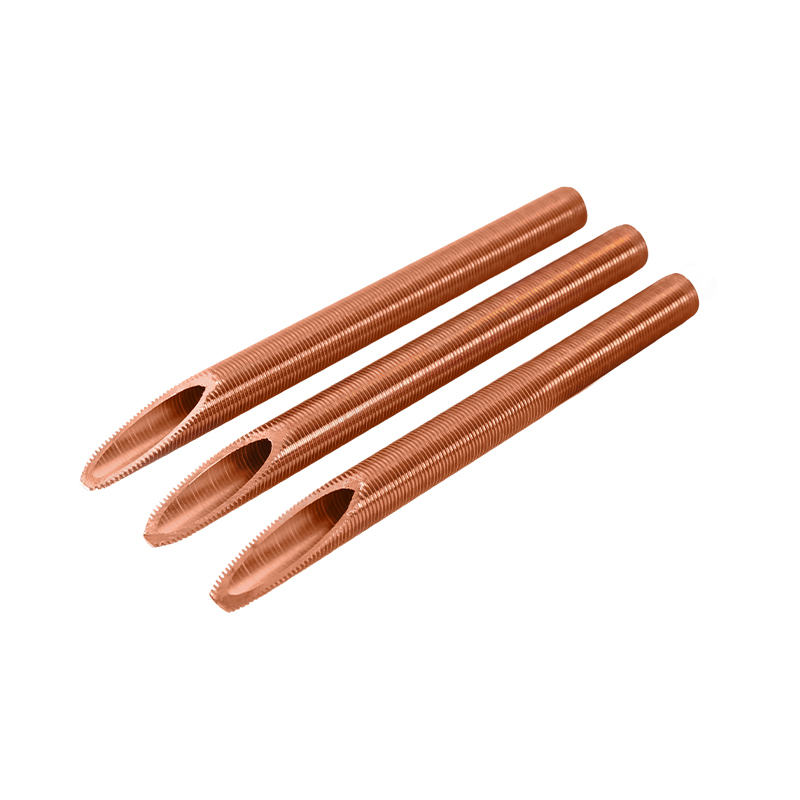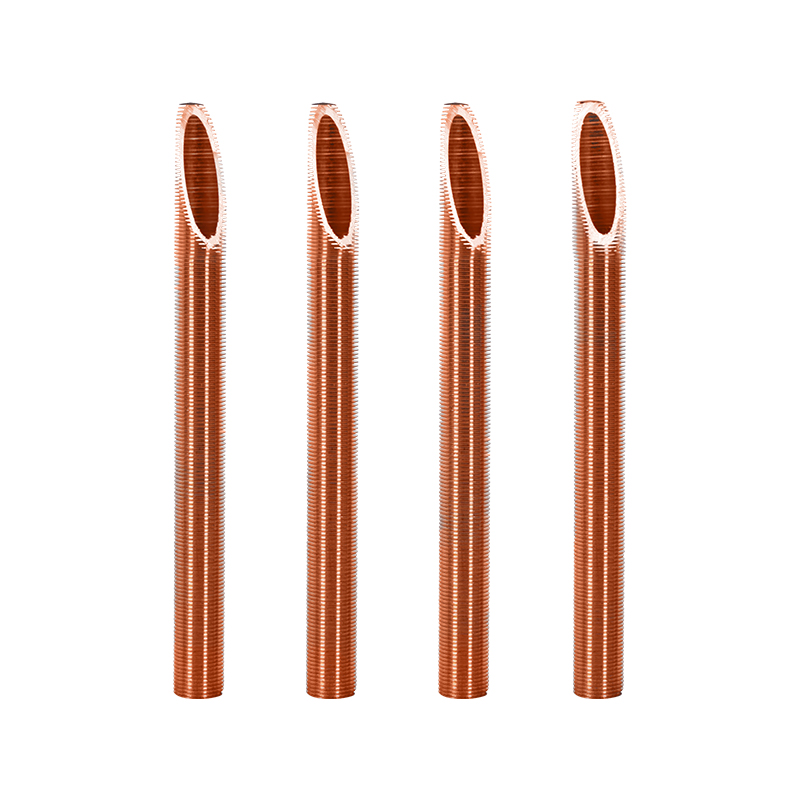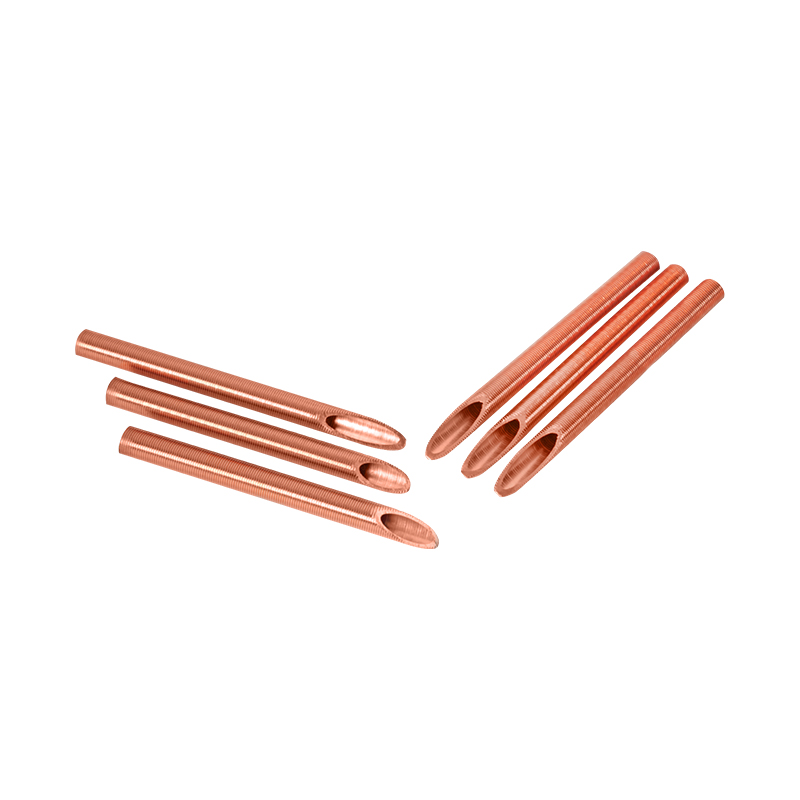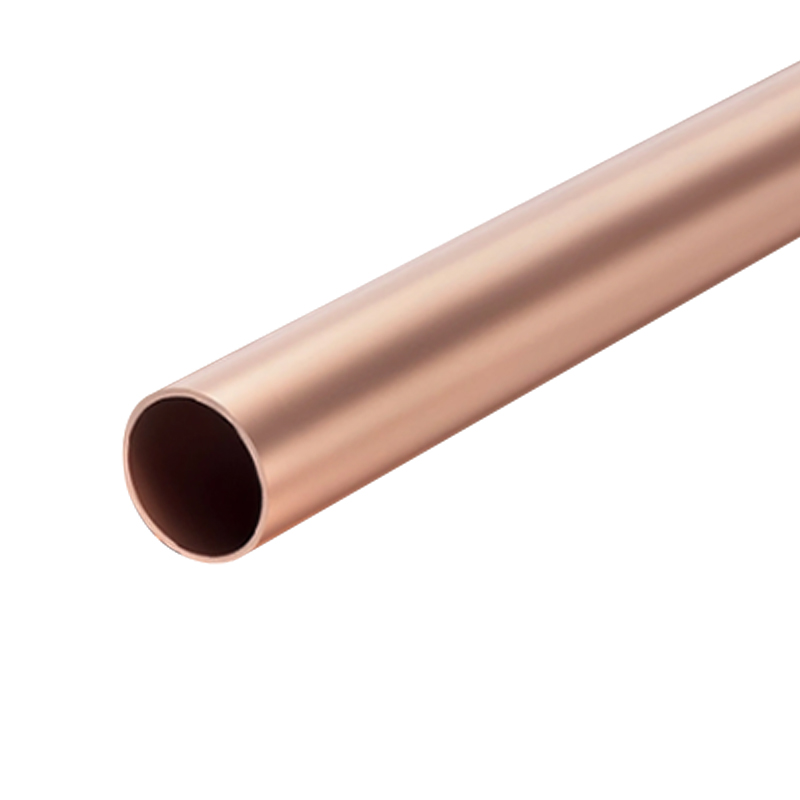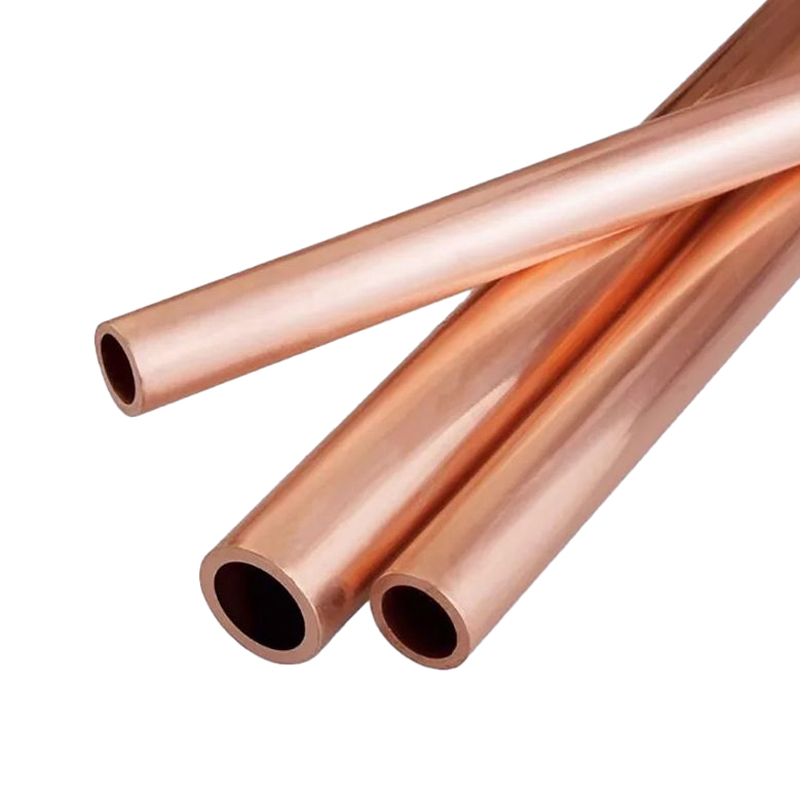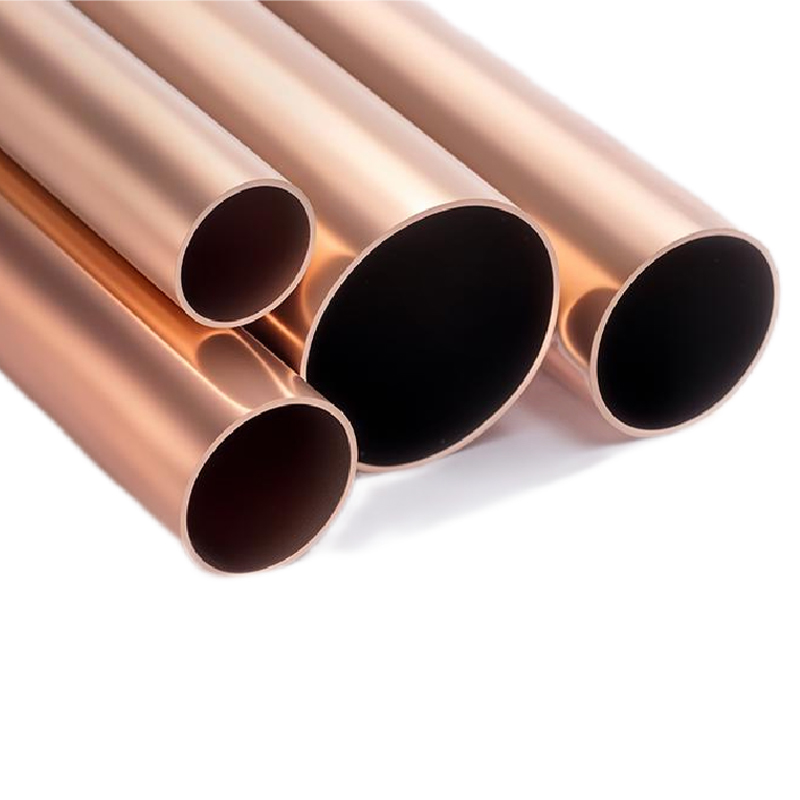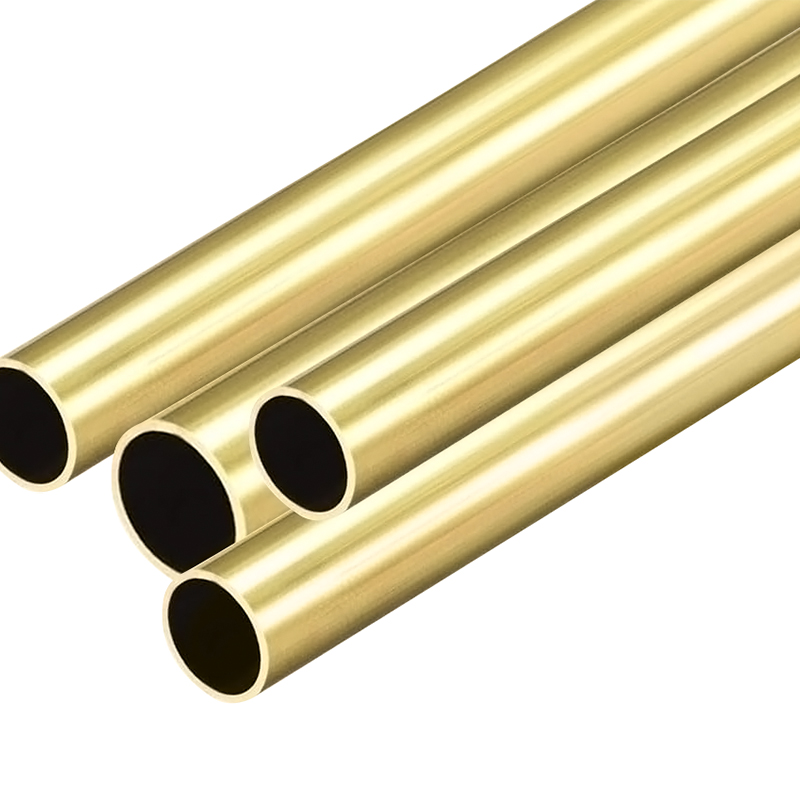Fin copper tube is a highly efficient heat exchange element. Its structural feature is that uniform fins are formed on the outer wall of the copper tube through integral processing. The fin height is usually between 0.9 mm and 1.4 mm, which effectively expands the heat exchange surface area of the copper tube and significantly improves the heat conduction and dissipation capacity. This product improves the overall thermal conductivity by disrupting the fluid boundary layer and accelerating surface heat transfer. It is particularly suitable for thermal systems that require efficient heat exchange, such as steam generators in power plant boilers, evaporators, and condensers in refrigeration systems. The size and geometry of the fin copper tube can be customized to meet the thermodynamic requirements of specific applications.
ABOUT US
30+YEARS OF
EXPERIENCE
About Us
A Reliable Partner of the Copper Tube Industry
Zhejiang Jingliang Copper-Tube Products Co., Ltd established in 1994, is China Fin Copper Tube Manufacturers and Custom Fin Copper Tube Suppliers, has been deeply involved in the copper tube industry for over three decades. The company primarily produce various specifications of products such as copper tubes, brass tubes, copper square tubes, fin copper tubes, copper capillary tubes, condenser copper tubes, copper evaporator tubes, and conductive rods, which are of quality and have earned the trust and acclaim of customers both domestically and internationally.
Wide Applications:
These products are widely used in various fields including air conditioning, refrigeration, heat exchange, sanitary ware, automotive, machinery, electric furnaces, and chemical industries.
Convenient Transportation:
Strategically located in Tangpu Town, renowned as the “home of copper tubes” in East China. Our company enjoys a prime location, adjacent to the Shangsan Expressway and National Highway 104, and is conveniently situated just over 70 kilometers from Hangzhou and Ningbo, ensuring easy accessibility and a business position.
Strong Financial Resources:
With its strong financial resources and advanced copper tube processing technology, our company holds an advantageous position in market share, brand value, technological content, and product quality, becoming a preferred supplier for many listed groups.
Large Scale Production:
The company occupies an area of over 20,000 square meters, with a construction area of 12,800 square meters. In 2022, our annual production exceeded 7,500 tons, with a value output of up to 450 million yuan, demonstrating our strong production capacity and market competitiveness.
Comprehensive Industry Chain:
Jingliang has now developed into a complete industrial chain integrating smelting, extrusion, drawing, precision rolling, and annealing. It has been awarded multiple honors, including "Top Ten Copper Tube Enterprises" and "Leading Taxpayer in the Copper Tube Industry".
Smart Manufacturing:
Jingliang Copper-Tube Products will better integrate the concept of factory construction into its corporate development strategy, insist on refining technology and polishing products more finely, and the future of "intelligent manufacturing".
Genuine Cooperation:
Zhejiang Jingliang Copper-Tube Products Co.,Ltd warmly welcomes friends from all walks of life to visit and offer guidance. We look forward to joining hands with you to create a brilliant future together.
Technical skills
Production Process
- 1、Electrolytic Copper
- 2、Copper Ingots
- 3、Press
- 4、Drawing
- 5、Rolling
- 6、Packaging
Electrolytic copper, produced through electrolytic processes, is a high-purity copper with good electrical conductivity and thermal conductivity, making it an ideal material for manufacturing copper pipes.
This marks the beginning of our production process, which involves the fabrication of electrolytic copper into pure copper or brass ingots according to specific requirements, followed by cutting to facilitate subsequent processing and handling.
In the pressing stage, the cut copper ingots are pressed into thin sheets or tubular shapes, forming the initial tube shape, and the copper ingots are prepared for drawing and rolling.
Drawing is the process of further processing the copper sheets or tubular objects that have been pressed into the required dimensions and shapes. Through drawing, our copper tubes can achieve precise outer diameters and wall thicknesses.
Rolling is the step of further processing the copper tubes after drawing. Through rolling, the copper tubes are rolled into more precise dimensions and shapes to meet the requirements of different applications.
Finally, the copper tubes that have undergone rolling will be packaged and prepared for shipping. We ensure that the packaging is safe and protective to prevent damage during transportation.
News
-
Copper Tube Industry Segmentation Report: How Are Niche Markets Reshaping the Competitive Landscape?
Subtitle: While traditional copper tubes grapple with price wars, segments like semiconductor-grade oxygen-free copper tubes and ultra-thin wall tubes for new energy vehicles achieve 30%+ gross margins—how do these niche products, represent...
READ MORE -
In the world of heat exchangers, air conditioning systems, refrigeration units, and other thermal management applications, the choice of materials for the tubes that facilitate heat transfer is crucial. Copper and aluminum are two of the mo...
READ MORE -
Refrigeration systems are essential in modern-day life, from preserving food and medicine to maintaining the comfort of our homes and workplaces. One of the key components that ensure the efficient operation of these systems is the capillar...
READ MORE
Industry knowledge
What is the effect of fin density of finned copper tube on heat transfer performance?
As the core component of heat exchange equipment, finned copper tube is widely used in many fields such as air conditioning, refrigeration, heat exchanger, etc. The quality of its heat transfer performance directly affects the energy efficiency and operation stability of the equipment.
What is fin density?
Fin density usually refers to the number of fins on the finned copper tube per unit length, or the number of fins per meter of tube length. As an additional heat dissipation structure on the surface of the copper tube, the main function of the fin is to increase the heat transfer surface area and improve the heat transfer efficiency. The higher the fin density, the larger the heat transfer area per unit length, and the theoretical heat transfer performance is improved accordingly.
The effect of fin density on heat transfer performance
Increase the heat transfer area and improve the heat transfer efficiency
When the fin density increases, the effective heat transfer area on the outer surface of the copper tube increases, which is conducive to accelerating the heat exchange between the fluid and the fin surface, thereby improving the overall heat transfer coefficient. Zhejiang Jingliang Copper-Tube Products Co., Ltd relies on advanced precision rolling and drawing technology to achieve precise manufacturing of high-density fins, ensure that the fins are evenly distributed and undamaged, and maximize the heat exchange effect.
Balance between fluid resistance and fin density
Although high fin density brings a larger heat exchange area, it also increases the flow resistance of air or refrigerant, affecting the fluid flow rate and heat exchange efficiency. If the spacing between fins is too small, it is easy to cause fluid turbulence and pressure drop, which may offset the advantages brought by the increase in heat exchange area. When designing the fin density, Zhejiang Jingliang combines fluid dynamics simulation to optimize the fin arrangement to achieve the best balance between heat transfer and flow resistance.
Effect of fin structure on thermal conductivity
The fins of fin copper tubes must not only ensure density, but also consider the thickness, material and shape of the fins. Zhejiang Jingliang uses high-quality copper materials and ensures uniform fin thickness and excellent thermal conductivity through precision rolling technology, which improves the efficiency of heat transfer from the copper tube body to the fins and avoids the thermal bottleneck caused by too thin fins.
The relationship between corrosion resistance and fin density
The high-density fin structure is complex, easy to accumulate dust and scale, and affect the heat exchange efficiency. Zhejiang Jingliang combines years of production experience and uses surface treatment technology to improve the corrosion resistance and stain resistance of the fins, reduce maintenance frequency, and ensure long-term stable operation.
What are the application characteristics of fin copper tubes in refrigeration systems
The core role of fin copper tubes in refrigeration systems
Fin copper tubes are usually used in the evaporator and condenser parts of refrigeration systems. Their main function is to enhance the heat exchange efficiency. Its fin structure greatly increases the heat exchange area, making the heat transfer between the refrigerant and the air (or other media) more efficient, ensuring rapid cooling and stable operation of the system.
Main application characteristics of fin copper tubes in refrigeration systems
High-efficiency heat transfer performance
Fin copper tubes greatly expand the heat exchange area through the fin design on the outer surface, significantly improving the heat transfer efficiency. Zhejiang Jingliang uses high-purity copper materials to ensure that the fins are tightly combined with the tube body during processing, maximize the heat conduction path, effectively improve the heat exchange efficiency of the evaporator and condenser, and promote the rapid completion of the phase change process of the refrigerant.
Excellent corrosion resistance
The operating environment of the refrigeration system is complex and is often exposed to corrosive media such as moisture and salt spray. Zhejiang Jingliang uses advanced surface treatment technology and strict quality control to ensure that the finned copper tube has good corrosion resistance and oxidation resistance, thereby extending the service life of the equipment and reducing maintenance costs.
Excellent mechanical strength and stability
The finned copper tube in the refrigeration system needs to withstand refrigerant pressure and external mechanical loads. Zhejiang Jingliang uses copper tubes that have been precisely annealed to ensure that they do not deform or leak under high-pressure working environments. At the same time, the fin design has been mechanically optimized to improve the overall structural strength and ensure safe and stable operation of the system.
Adapt to diverse refrigerants and system designs
With the popularity of environmentally friendly refrigerants, fin copper tubes need to be compatible with different types of refrigerants and adapt to diverse system designs. Zhejiang Jingliang has a full range of product specifications, ranging from thin-diameter capillaries to large-diameter condenser tubes, meeting the requirements of different refrigerant flow and pressure, and supporting the efficient operation of traditional and new environmentally friendly refrigeration systems.
Superior processing accuracy and consistency
The heat transfer performance of fin copper tubes is highly dependent on the uniformity and density of the fins. Zhejiang Jingliang uses automated production lines and intelligent manufacturing technology to achieve precise control of fin density and size, ensuring that the heat exchange performance of each copper tube is stable and consistent, meeting the stringent quality requirements of high-end refrigeration equipment.
Fin copper tube cleaning and maintenance methods and their impact on performance
The importance of fin copper tube cleaning
Fin copper tubes increase the heat exchange area through fins and improve heat exchange efficiency. However, during long-term operation, dust, oil, scale and corrosion products in the air will adhere to the surface of the fins or the inner wall of the tube, forming a dirt layer, hindering heat transfer, resulting in a decrease in heat exchange efficiency, and even affecting the safety of equipment operation.
Zhejiang Jingliang uses high-purity copper materials and advanced processing technology to make fin copper tubes have excellent corrosion resistance and mechanical strength, but any copper tube will still be affected by performance loss if it lacks proper cleaning during use. Therefore, reasonable and effective cleaning and maintenance are the key to ensuring the long-term and stable operation of fin copper tubes.
Fin copper tube cleaning method
Mechanical cleaning method
Use physical means such as brushes, steel wool or high-pressure gas to remove dust and loose dirt on the surface of the fins. Zhejiang Jingliang's fin design takes into account structural robustness and can withstand a certain degree of mechanical cleaning without damaging the fin structure. It is a common and economical cleaning method in daily maintenance.
Chemical cleaning method
For scaling or stubborn dirt in the tube, use appropriate acid and alkali solutions for chemical reaction removal. Zhejiang Jingliang strictly controls the chemical composition and surface treatment of copper materials to ensure excellent acid and alkali resistance, supports the safe use of a variety of cleaning agents, and minimizes the corrosion of copper tubes caused by chemical cleaning.
High-pressure water jet cleaning
Use high-pressure water flow to impact and remove sediments in the fin gap and pipeline. Zhejiang Jingliang's fins are arranged tightly and evenly, combined with a sturdy structural design, to ensure that this type of cleaning method can effectively remove dirt without damaging the fins and tube walls.
Online cleaning technology
In large central air-conditioning and refrigeration systems, Zhejiang Jingliang cooperates with advanced online cleaning equipment to achieve automatic cleaning of the equipment without stopping, greatly reducing maintenance costs and improving system operation efficiency.
Key measures for fin copper tube maintenance
Regular inspection and monitoring
Zhejiang Jingliang recommends that users formulate scientific inspection cycles based on the equipment operating environment and usage intensity, and use thermal imaging, pressure difference detection and other technical means to promptly detect abnormal changes in the heat exchange performance of fin copper tubes to prevent problems before they occur.
Anti-corrosion protection
Although Zhejiang Jingliang products have good corrosion resistance, daily maintenance still needs to pay attention to avoid long-term immersion in corrosive media. Reasonable control of environmental humidity, avoidance of acidic and alkaline media residues, and the use of surface protective coatings and other measures can effectively extend the life of copper tubes.
Standardization of operating procedures
Provide professional training for operators of refrigeration and heat exchange equipment to ensure that the equipment startup and shutdown process meets the process requirements and avoid mechanical damage to fin copper tubes caused by water hammer, sudden pressure changes, etc.
The impact of cleaning and maintenance on the performance of fin copper tubes
Improve heat exchange efficiency
Remove dirt on the fin surface and inside the tube in time to effectively restore the designed heat transfer performance of the fin copper tube. Zhejiang Jingliang helps users maximize system energy efficiency and save operating costs through precise fin design and material selection, combined with scientific cleaning and maintenance solutions.
Extend service life
Through regular maintenance, reduce corrosion and mechanical wear, avoid fin shedding and tube wall perforation, ensure that the fin copper tube maintains good structural stability, and extend the overall life of the equipment.
Ensure equipment safety
Reduce pressure abnormalities and uneven heat dissipation caused by dirt blockage, reduce the risk of equipment failure, and improve the safety and reliability of system operation.

 English
English Español
Español
